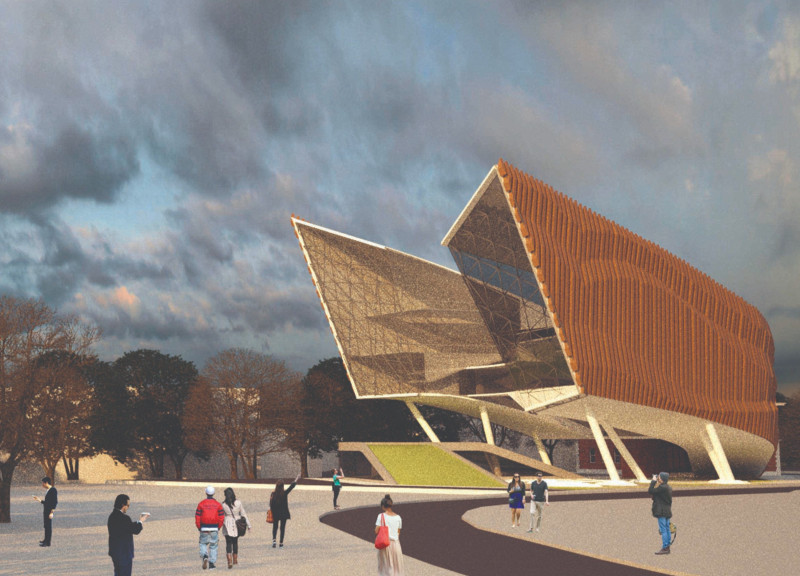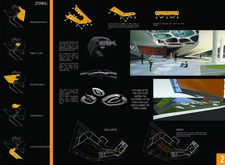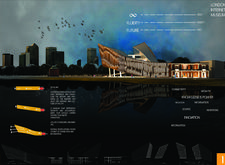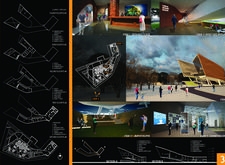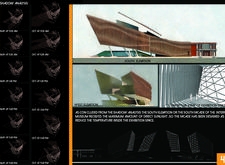5 key facts about this project
### Project Overview
The London Internet Museum is designed to commemorate the history and cultural evolution of the internet, situated within the urban framework of London. The intent is to create a multifunctional space that serves as an information hub and a venue for community engagement, reflecting modern architectural considerations alongside cultural significance.
### Spatial Organization and User Engagement
The layout of the museum is strategically segmented into functional areas, including a presentation facility for exhibitions, a food and beverage zone to encourage social interaction, and educational spaces designed for collaborative learning. The entrance foyer serves as a central welcome hub that promotes ease of navigation, facilitating smooth transitions between different zones. The fluidity of the building’s form, characterized by curvilinear lines, contrasts with conventional museum designs, representing the dynamic nature of digital communication.
### Material Selection and Sustainability Initiatives
Materiality is a key aspect of the design, balancing aesthetic appeal with functionality and sustainability. The facade features sustainably sourced wood, which provides warmth, while extensive use of glass enhances transparency and allows natural light to permeate interior spaces. Concrete elements ensure structural integrity, complemented by metal framing that adds to the contemporary feel of the museum. The design incorporates sustainable features, including solar panels on the roof for energy efficiency, and careful shadow analysis optimizing natural light while minimizing energy consumption for climate control.


